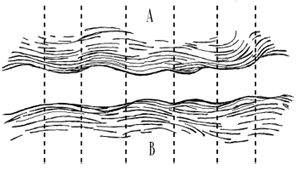THE COURSE IN GENERAL LINGUISTICS. 1916-2016. THE EMERGENCE
It was at the University of Geneva that Ferdinand de Saussure gave his courses in general linguistics. We know that many of his ideas were developed starting in his lectures in 1891 and prior to that in Paris, as part of the different courses he was giving on particular languages. Between 1907 and 1911, his students were able to attend courses specifically dedicated to general linguistics, as he conceived it. They were not disappointed. Indeed it was they who were the first to react to their teacher’s death by ensuring that the content of the lectures they had attended were not lost. The Course in General Linguistics is the result of this enterprise destined to perpetuate and transmit this heritage.
The Geneva Colloquium is devoted to the emergence of the CLG. Its three parallel sessions approach the work from three different and complementary angles. The ‘independent’ workshops allowed still other perspectives to be opened.
The first thing to consider is how the book edited by Bally and Sechehaye was conceived, in terms of the choices made: selection of contents, ordering of ideas, decisions concerning how much to develop themes recorded in the students’ notebooks and in Saussure’s own notes. Over the last half century, much progress has been made: the work of Engler and De Mauro, extended by the immense, ongoing enterprise of publishing and interpreting the different sources, have improved our understanding of this genesis.
Secondly, in conformity with the circumstances that led to its creation and that its title reflects, the Course in General Linguistics is a course – in other words, teaching. We know that this textbook does not reflect the reality of the class, or rather the classes. Questioning is needed of the didactic aspect of the original Saussurean enterprise, of its transcription in a textbook destined to transmit knowledge – conceived by Bally and Sechehaye. This explains the didactic nature of the Cours from the point of view of the organization of lectures that mix moments of the most elementary explanation with moments of technical depth, taken up in the publication. It must be remembered that this work represents the archetype of a textbook for linguistics and the human sciences.
Finally, the third panel will focus on the critical history of the translations that made possible the international diffusion of the work and its stances, paying particular attention to the translation of Saussurean terminology. The translations of the CLG have of course played a very important role in the later diffusion of this discourse that originated in Geneva, yet we need to recall that it is through bilingual editions including not only the transcription of the notebooks of certain students but also and simultaneously their translation that we have been able to get a closer image of the reality of the moment. This aspect of the philological research into the origins of the CLG was immediately doubled with the aim of international diffusion.
